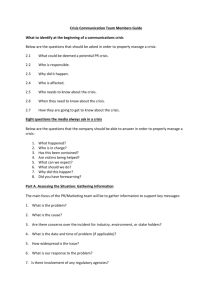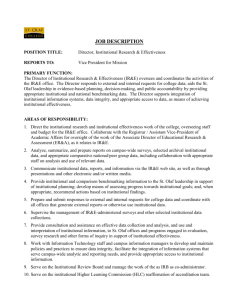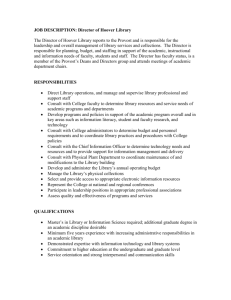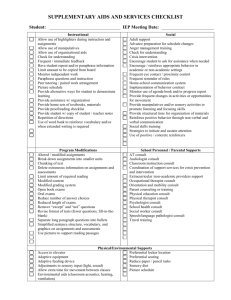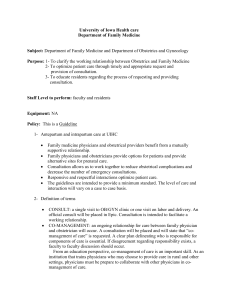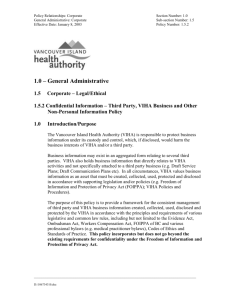Communications Plan (South Island Division)
advertisement
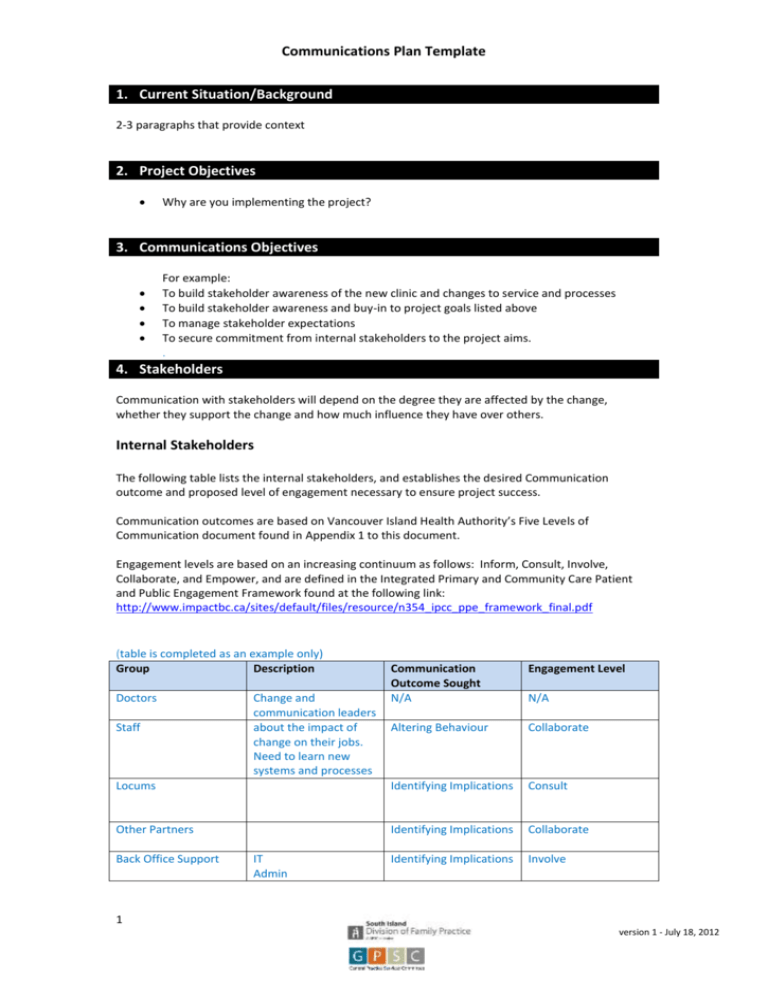
Communications Plan Template 1. Current Situation/Background 2-3 paragraphs that provide context 2. Project Objectives Why are you implementing the project? 3. Communications Objectives For example: To build stakeholder awareness of the new clinic and changes to service and processes To build stakeholder awareness and buy-in to project goals listed above To manage stakeholder expectations To secure commitment from internal stakeholders to the project aims. . 4. Stakeholders Communication with stakeholders will depend on the degree they are affected by the change, whether they support the change and how much influence they have over others. Internal Stakeholders The following table lists the internal stakeholders, and establishes the desired Communication outcome and proposed level of engagement necessary to ensure project success. Communication outcomes are based on Vancouver Island Health Authority’s Five Levels of Communication document found in Appendix 1 to this document. Engagement levels are based on an increasing continuum as follows: Inform, Consult, Involve, Collaborate, and Empower, and are defined in the Integrated Primary and Community Care Patient and Public Engagement Framework found at the following link: http://www.impactbc.ca/sites/default/files/resource/n354_ipcc_ppe_framework_final.pdf (table is completed as an example only) Group Description Communication Outcome Sought N/A Engagement Level Altering Behaviour Collaborate Locums Identifying Implications Consult Other Partners Identifying Implications Collaborate Identifying Implications Involve Doctors Staff Back Office Support Change and communication leaders about the impact of change on their jobs. Need to learn new systems and processes IT Admin N/A 1 version 1 - July 18, 2012 Communications Plan Template External Stakeholders The following table lists the external stakeholders, and establishes level of engagement necessary to ensure project success. Engagement levels are based on an increasing continuum as follows: Inform, Consult, Involve, Collaborate, and Empower, and are defined in the Integrated Primary and Community Care Patient and Public Engagement Framework found at the following link: http://www.impactbc.ca/sites/default/files/resource/n354_ipcc_ppe_framework_final.pdf (table is completed as an example only) Group Description Engagement Level Patients Doctors (to be recruited) Inform Consult Family Physicians that have an interest in living and working in a rural environment. Local communities Community leaders who may have the influence to enhance integration opportunities and communicate about the clinic to constituents Inform General Public People in the community with an interest in local health resources and other people who have an interest in rural health care models. Inform 5. Key Message per Target Audience “Inform” Audiences: “Consult” Audiences: “Involve” Audiences: “Collaborate” Audiences: 6. Communications Mix External Communications Mix Press Press release (in conjunction with partners) Radio Online Website presence TV 2 version 1 - July 18, 2012 Communications Plan Template News and features (local stations) Advertising Print Print Brochures Posters Letters Leaflets White boards in offices Public Relations Event Endorsements Internal Communications Mix Face-to-face meetings Email updates Documentation (policy and workflow) 7. Branding Logo development included here 8. Budget Communications are to be delivered in a manner to minimize cost. There is no budget allocated specifically to communications. Costs, if any, need to be absorbed within the clinics’ operating budgets. (or – list budget) 9. Timeline When will you need to communicate over the next few months? List the key dates - what do you need and when. Describe each key event or activity that will need communications What: Why: Where: When: 3 version 1 - July 18, 2012 Communications Plan Template Who: How: Target Audience: Objective: Key Message(s): Tools and Materials: 10. Evaluating Success How will you know if you have succeeded and met your objectives? How are you going to evaluate your success, what performance indicators and evaluating measures will you use? It's important to assess your strategy/project so that any changes, if necessary, can be made when engaging in a similar strategy/project in the future. External Have you achieved your objectives? Did you reach the right audience? Did you use the right tools? Were decisions taken as a result? Did you come in on budget? If you didn't, why not? Internal Did you reach the right people within the organization? Did they understand what the message was - did they do what had to be done? Did you use the right tools? etc 4 version 1 - July 18, 2012 Communications Plan Template APPENDIX ONE – from VIHA’s Learning and Development Website http://www.viha.ca/NR/rdonlyres/919A32AC-0B6E-44EB-9001AA9A8EBC70DE/0/FiveLevelsofCommunication2.pdf 5 version 1 - July 18, 2012



